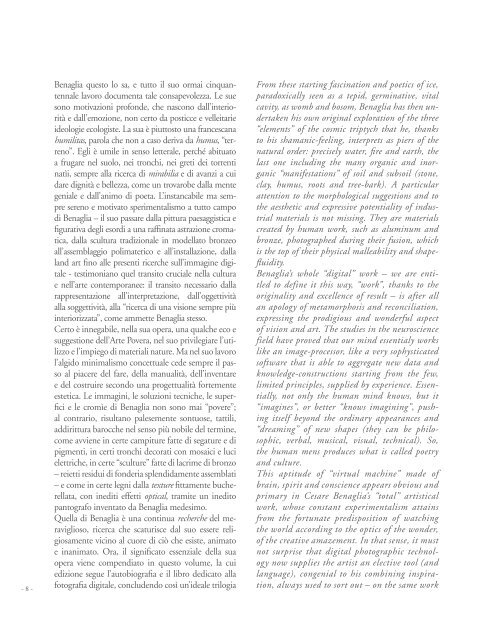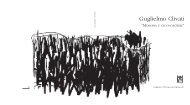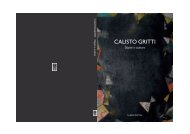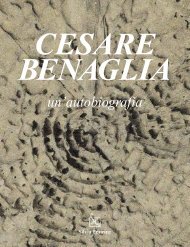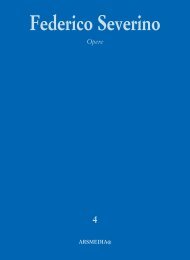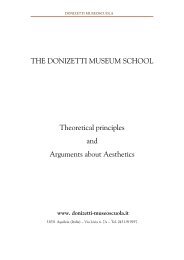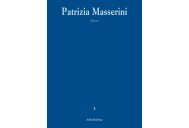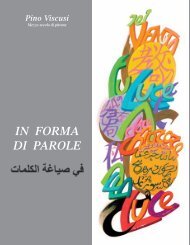Cesare Benaglia - Trittici Vita Arte Natura - Arsmedia
Cesare Benaglia - Trittici Vita Arte Natura - Arsmedia
Cesare Benaglia - Trittici Vita Arte Natura - Arsmedia
Create successful ePaper yourself
Turn your PDF publications into a flip-book with our unique Google optimized e-Paper software.
- 8 -<br />
<strong>Benaglia</strong> questo lo sa, e tutto il suo ormai cinquantennale<br />
lavoro documenta tale consapevolezza. Le sue<br />
sono motivazioni profonde, che nascono dall’interiorità<br />
e dall’emozione, non certo da posticce e velleitarie<br />
ideologie ecologiste. La sua è piuttosto una francescana<br />
humilitas, parola che non a caso deriva da humus, “terreno”.<br />
Egli è umile in senso letterale, perché abituato<br />
a frugare nel suolo, nei tronchi, nei greti dei torrenti<br />
natìi, sempre alla ricerca di mirabilia e di avanzi a cui<br />
dare dignità e bellezza, come un trovarobe dalla mente<br />
geniale e dall’animo di poeta. L’instancabile ma sempre<br />
sereno e motivato sperimentalismo a tutto campo<br />
di <strong>Benaglia</strong> – il suo passare dalla pittura paesaggistica e<br />
figurativa degli esordi a una raffinata astrazione cromatica,<br />
dalla scultura tradizionale in modellato bronzeo<br />
all’assemblaggio polimaterico e all’installazione, dalla<br />
land art fino alle presenti ricerche sull’immagine digitale<br />
- testimoniano quel transito cruciale nella cultura<br />
e nell’arte contemporanee: il transito necessario dalla<br />
rappresentazione all’interpretazione, dall’oggettività<br />
alla soggettività, alla “ricerca di una visione sempre più<br />
interiorizzata”, come ammette <strong>Benaglia</strong> stesso.<br />
Certo è innegabile, nella sua opera, una qualche eco e<br />
suggestione dell’<strong>Arte</strong> Povera, nel suo privilegiare l’utilizzo<br />
e l’impiego di materiali nature. Ma nel suo lavoro<br />
l’algido minimalismo concettuale cede sempre il passo<br />
al piacere del fare, della manualità, dell’inventare<br />
e del costruire secondo una progettualità fortemente<br />
estetica. Le immagini, le soluzioni tecniche, le superfici<br />
e le cromìe di <strong>Benaglia</strong> non sono mai “povere”;<br />
al contrario, risultano palesemente sontuose, tattili,<br />
addirittura barocche nel senso più nobile del termine,<br />
come avviene in certe campiture fatte di segature e di<br />
pigmenti, in certi tronchi decorati con mosaici e luci<br />
elettriche, in certe “sculture” fatte di lacrime di bronzo<br />
– reietti residui di fonderia splendidamente assemblati<br />
– e come in certe legni dalla texture fittamente bucherellata,<br />
con inediti effetti optical, tramite un inedito<br />
pantografo inventato da <strong>Benaglia</strong> medesimo.<br />
Quella di <strong>Benaglia</strong> è una continua recherche del meraviglioso,<br />
ricerca che scaturisce dal suo essere religiosamente<br />
vicino al cuore di ciò che esiste, animato<br />
e inanimato. Ora, il significato essenziale della sua<br />
opera viene compendiato in questo volume, la cui<br />
edizione segue l’autobiografia e il libro dedicato alla<br />
fotografia digitale, concludendo così un’ideale trilogia<br />
From these starting fascination and poetics of ice,<br />
paradoxically seen as a tepid, germinative, vital<br />
cavity, as womb and bosom, <strong>Benaglia</strong> has then undertaken<br />
his own original exploration of the three<br />
“elements” of the cosmic triptych that he, thanks<br />
to his shamanic-feeling, interprets as piers of the<br />
natural order: precisely water, fire and earth, the<br />
last one including the many organic and inorganic<br />
“manifestations” of soil and subsoil (stone,<br />
clay, humus, roots and tree-bark). A particular<br />
attention to the morphological suggestions and to<br />
the aesthetic and expressive potentiality of industrial<br />
materials is not missing. They are materials<br />
created by human work, such as aluminum and<br />
bronze, photographed during their fusion, which<br />
is the top of their physical malleability and shapefluidity.<br />
<strong>Benaglia</strong>’s whole “digital” work – we are entitled<br />
to define it this way, “work”, thanks to the<br />
originality and excellence of result – is after all<br />
an apology of metamorphosis and reconciliation,<br />
expressing the prodigious and wonderful aspect<br />
of vision and art. The studies in the neuroscience<br />
field have proved that our mind essentialy works<br />
like an image-processor, like a very sophysticated<br />
software that is able to aggregate new data and<br />
knowledge-constructions starting from the few,<br />
limited principles, supplied by experience. Essentially,<br />
not only the human mind knows, but it<br />
“imagines”, or better “knows imagining”, pushing<br />
itself beyond the ordinary appearances and<br />
“dreaming” of new shapes (they can be philosophic,<br />
verbal, musical, visual, technical). So,<br />
the human mens produces what is called poetry<br />
and culture.<br />
This aptitude of “virtual machine” made of<br />
brain, spirit and conscience appears obvious and<br />
primary in <strong>Cesare</strong> <strong>Benaglia</strong>’s “total” artistical<br />
work, whose constant experimentalism attains<br />
from the fortunate predisposition of watching<br />
the world according to the optics of the wonder,<br />
of the creative amazement. In that sense, it must<br />
not surprise that digital photographic technology<br />
now supplies the artist an elective tool (and<br />
language), congenial to his combining inspiration,<br />
always used to sort out – on the same work


